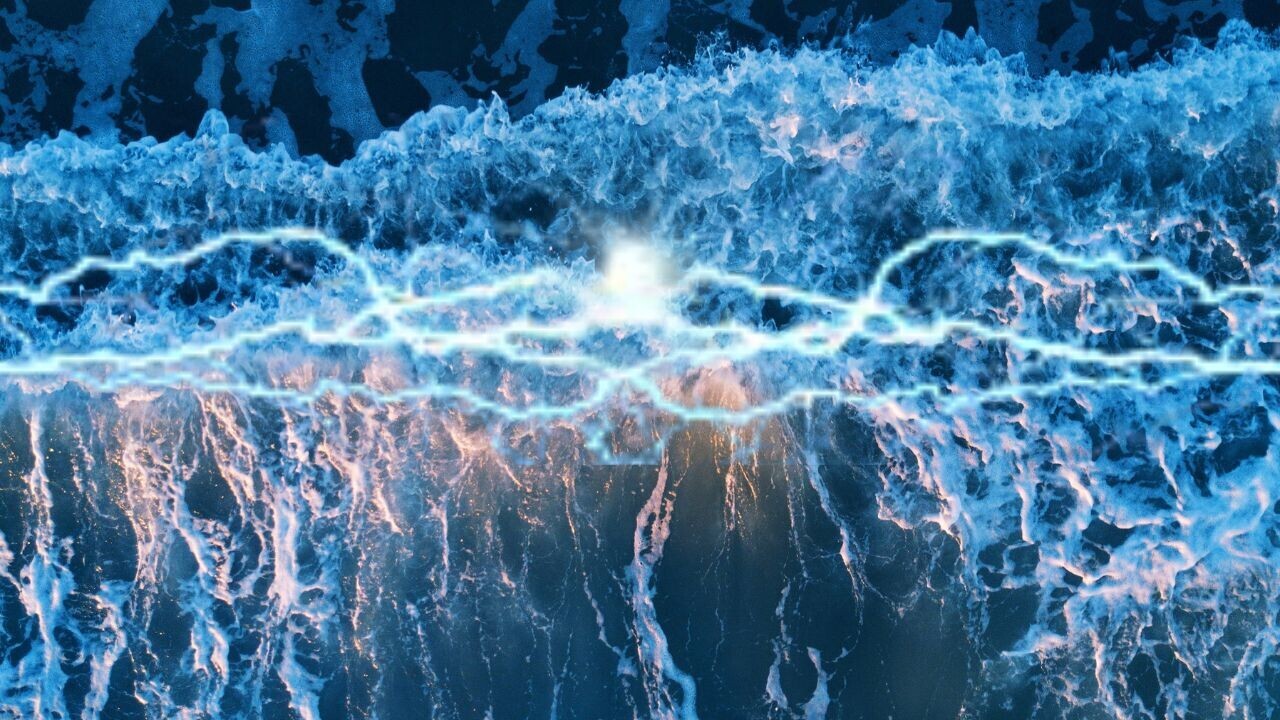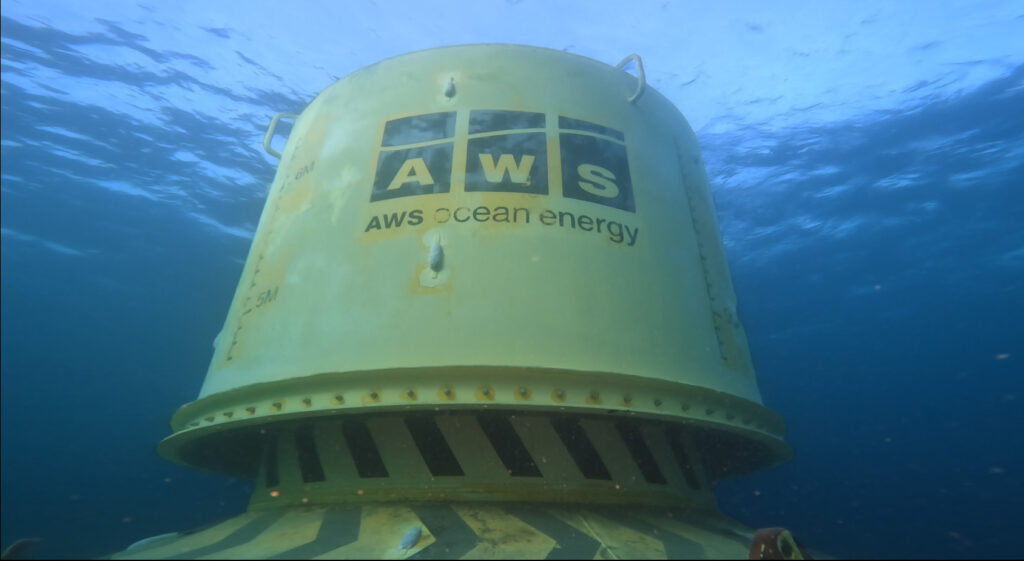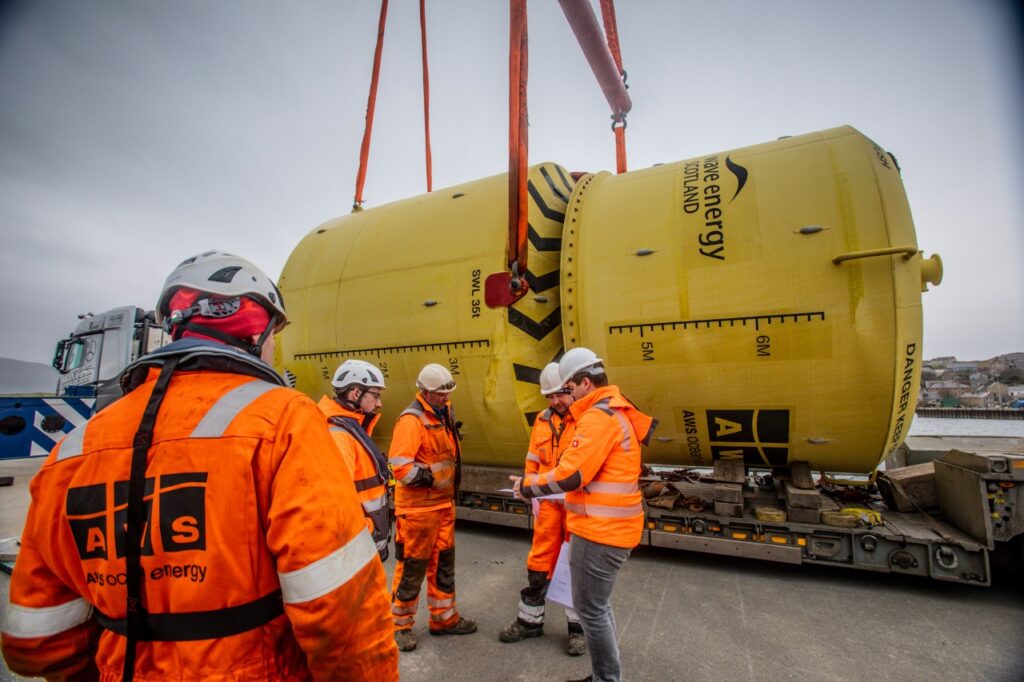
The idea of using waves as an energy source is far from new; in fact, attempts have been documented as early as 1799. But since then, harnessing wave power for commercial applications has proven to be a challenging pursuit: devices are vulnerable to harsh weather conditions, they have a high capital cost, or simply don’t produce enough power to make for a viable business project.
But Scotland-based AWS Ocean Energy aims to change that.
The startup has reported results 20% better than expected for its Archimedes Waveswing, a prototype wave energy generator that, for the past six months, has been undergoing ocean-based testing at the European Marine Energy Centre (EMEC) in Orkney.

The Archimedes Waveswing is a 50-ton, cylindrical metal buoy that’s tethered to the seabed. It reacts to changes in sub-sea water pressure caused by passing waves and converts the resulting motion to electricity via a direct-drive generator.
Here’s a quick explanation of how it works:
The buoy comes with some significant competitive advantages.
Unlike wave power systems designed to rest on the ocean’s surface, AWS’ waveswing performance isn’t limited to motions — and, thus, power output — that depends on wave height. Instead, it expands and contracts in response to the changes in pressures exerted by a passing wave, which means that it can achieve a true point absorber effect regardless of the wave’s shape and size.
At the same time, its subsea location helps it avoid damage from harsh weather conditions.
The company also claims that smart control software enables performance to be finely tuned to the incoming sea state, maximizing power capture per ton of structure, and thus, minimizing costs.

AWS reports that during testing at EMEC, the wave energy converter captured average power over 10kW and peaks of 80kW, “during a period of moderate wave conditions,” against its initially rated capacity of 16kW.
The trials also showed that it can survive Force-10 gale conditions, and can be fully deployed in 12 hours.
Here’s a look of the device’s real life performance during testing:
According to Simon Grey, the startup’s CEO, the Waveswing’s single absorber design makes it “ideal” for remote power applications, including powering subsea oilfield assets and oceanographic monitoring.
“However, for utility scale power, we are convinced the future lies in multi-absorber platforms which can achieve the scale necessary for wave power to make a significant contribution to renewable energy supplies,” Grey added.
Accordingly, the company aims to deploy its device in water depths in excess of 25m either as a single buoy, or for integration into a multi-absorber structure.
In the first case, a single unit would be configured to ratings between 15kW and 500kW, while a multi-absorber unit could offer up to 10MW.
The current phase of sea trials is scheduled to complete by the end of this year, and AWS is looking into redeployment for further testing early in 2023. In the meantime, it’s seeking discussions with commercialization partners, envisioning applications from powering remote oilfield infrastructure and aquaculture, to providing renewable energy to remote maritime communities.
Harnessing wave energy is an area of immense potential. It’s not dependent on light like solar power, or the force of the wind like wind power — meaning it could ensure a reliable electricity supply, which could, in turn, significantly reduce renewable energy prices.
Get the TNW newsletter
Get the most important tech news in your inbox each week.





